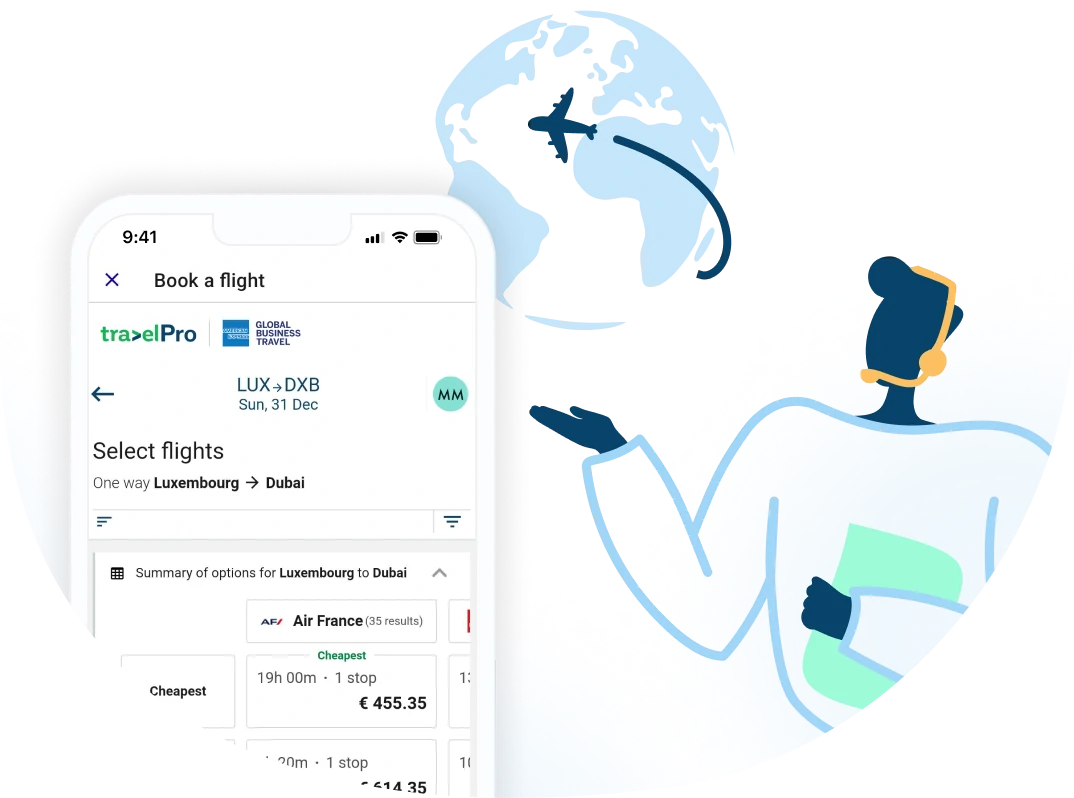
We personalise your business travel
As a member of the American Express Global Business Travel’s travel partner network, our specialists will manage your business trip and support you throughout all stages of your travel (before, during & after).

Are you interested to see how Travel Pro works and the tools we use ?
Discover with a personalized demo

Seamless travel solutions for your business success

Travel Pro offers customized and tailored services to meet your organization's needs.
See all servicesOnline booking tool
Manage all your company's trips in one place and have full visibility into spend.
More informationWho we are
Travel Pro is the largest travel management company in Luxembourg, providing technology and services to personalize your business trip.
Travel Pro has been offering tailor-made business travel solutions since 1993, today we are part of SLG, with whom we share the same values, objectives and vision.
More about usOur Group offers attractive job opportunities
Join Travel Pro team